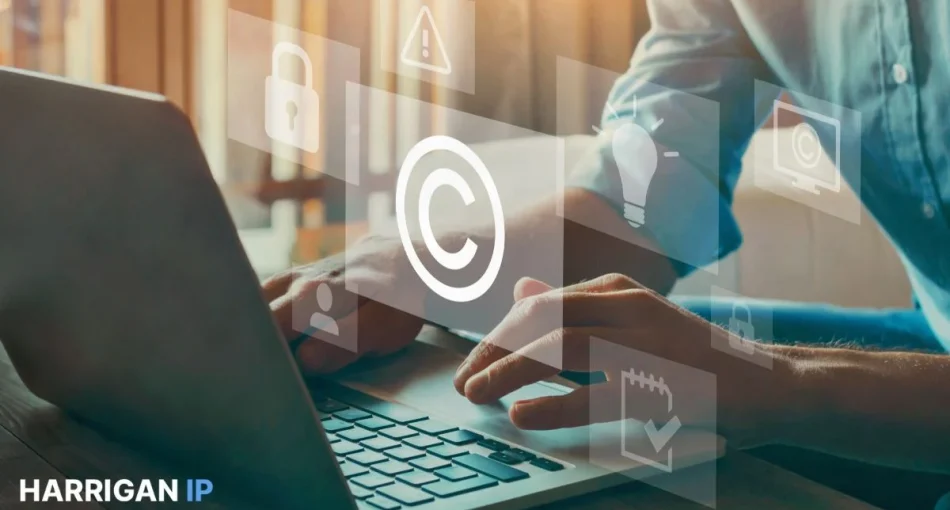Trademark vs Copyright: What’s the Difference?

Many people confuse trademarks vs copyrights, but understanding how each functions is key to protecting what you create. While both offer legal safeguards, they serve distinct purposes. Recognizing those differences helps ensure your brand, creative works, and commercial assets are protected from misuse or infringement.
Build Protection That Lasts
At Harrigan IP, we represent clients ranging from entrepreneurs launching their first product to corporations managing national portfolios. Every trademark application and copyright registration we handle reflects our commitment to protecting what our clients create. With over two decades of experience, our founding attorney provides custom solutions tailored to each client’s needs across all 50 states.
The Basics of Trademarks and Copyright
Trademarks protect brand identifiers like names, logos, and slogans. They help consumers distinguish one product or service from another and maintain a company’s reputation. Trademarks are a key tool in preventing competitors from copying your brand identity.
Copyright protects original creative works such as books, music, art, films, and code. It grants the creator exclusive rights to reproduce, distribute, and adapt the work. Unlike trademarks, copyright safeguards content rather than branding, giving creators control over how their work is used and monetized.
Key Differences Between Trademarks and Copyright
While both forms of protection are valuable, they differ in scope and application. Some key distinctions include:
- Dual Protection: Some assets, like logos, can be protected by both copyright and trademark. Copyright covers the artistic design, while trademark protects the logo’s use in commerce.
- Company Logos: A logo may qualify for copyright as a creative work and for trademark as a source identifier, providing layered protection for both creativity and brand recognition.
- Duration: Copyright usually lasts for the creator’s life plus 70 years, regardless of commercial use. Trademarks can last indefinitely, but only if they’re used in commerce and properly maintained.
- Different Registration Systems: Copyright is registered through the U.S. Copyright Office. Trademarks are registered through the U.S. Patent and Trademark Office (USPTO). Each system has its own standards and procedures for application and renewal.
By leveraging both forms of protection, businesses and creators can safeguard their work from multiple angles—commercially and creatively.
Legal Solutions for Infringement
Trademark and copyright infringement involve different types of legal analysis:
Trademark infringement centers on whether consumers are likely to be confused by a similar mark. Courts evaluate the similarity of the marks, the relatedness of the goods or services, and whether the infringer’s use damages the brand’s reputation or causes customer confusion.
Copyright infringement occurs when someone copies, distributes, or uses a creative work without permission. Courts examine the originality of the work, whether copying occurred, and whether any defenses (like fair use) apply. These cases often require less evidence of actual damage and focus more on unauthorized use.
Why Legal Guidance Matters
Securing trademark or copyright protection can be complex. An attorney helps avoid common mistakes that cause delays or rejections. For trademarks, this includes conducting a clearance search to identify potential conflicts before filing.
Copyright law can also be tricky, especially when it comes to joint authorship, licensing, or work-for-hire arrangements. A knowledgeable attorney can draft agreements that protect your rights and help you retain control over how your creative work is used.
Frequently Asked Questions
What makes a trademark different from a copyright?
A trademark protects words, phrases, symbols, or designs used to identify and distinguish a business or product. A copyright protects original creative expressions, such as books, music, films, and artwork. Trademarks protect commercial branding, while copyrights protect creative ownership.
What types of intellectual property qualify for trademark protection?
Trademark protection covers elements that identify the source of goods or services, such as names, logos, slogans, or distinctive packaging. These elements must be used in commerce and capable of distinguishing the business from competitors.
What does copyright protect?
Copyright protects original works fixed in a tangible medium, such as writing, music, photography, video, or software. The work must be creative and recorded in some form. Copyright ownership usually belongs to the creator unless assigned by agreement or created under employment.
Can something qualify for both trademark and copyright protection?
Yes. For example, a business logo may qualify for copyright as a creative work and for trademark as a brand identifier. These protections serve different purposes and are enforced under different legal frameworks.
Guard Your Assets
Intellectual property is one of your most valuable business assets. Whether you’re building a brand or creating original content, the right legal protection matters. Trademarks and copyrights work best when used together, providing full-spectrum defense for both brand identity and creative works.
Schedule a consultation with Harrigan IP today to find out how we can help you protect what makes your business unique.
Contct Us
Contact Us Today
"*" indicates required fields
